“], “filter”: { “nextExceptions”: “img, blockquote, div”, “nextContainsExceptions”: “img, blockquote, a.btn, a.o-button”} }”>
As a beginner to yoga, you know that it can take some time to understand the basic shapes of poses. As you’re familiarizing yourself with how these postures feel in your body, you probably want to practice them outside of the online or studio classes you attend. But you may have no idea how to string the poses together in a yoga sequence for beginners that makes sense for your body.
Yoga sequences come in all different shapes and sizes. Most progressions of poses are linear, with one posture follows another in a logical step-by-step direction, moving from less challenging to more challenging and back to less challenging. In general, a practice, or sequence, opens with stretches that warm up the body, then progresses to more challenging standing postures, and then slows to cooling stretches before it ends with your final relaxation.
This is just one way to sequence. Each school of yoga has its own ideas about how to sequence an asana practice. Typically each posture in the sequence is performed once, but as a beginner it could help you to perform each posture two to three times, focusing on a different aspect of the posture each time. For example, you can practice a pose such as Triangle (Trikonasana) focusing on your feet or legs the first time and then repeat it while focusing on your spine or arms.
How to Create a Yoga Sequence for Beginners
The poses in most yoga sequences for beginners are grouped into four basic sections:
1. Centering
Begin your practice in a seated or reclined position with either a simple meditation or breathing exercise to collect and concentrate your awareness. A breathing exercise can be as simple as resting your attention on each inhalation and exhalation and focusing on allowing them to become slightly longer and deeper.
2. Warm-Up
These are simple stretches and less-intense versions of poses that allow your body to slowly warm up in preparation for the poses to come.
3. Standing and Balancing
The middle portion of a sequence usually includes standing poses that challenge you to find the shape of a pose while not forgetting to breathe, and to engage your body in various ways while maintaining a balance of effort and ease. The pose itself is not yoga. Being aware of how you hold yourself in the pose is yoga.
This part of class can include balancing poses in which you are challenged to steady yourself with less connection to the ground than usual. When you focus on our balance and steady your gaze on a single point in front of you and quiet your thoughts to focus on your body, you can become even more grounded in yourself despite having less contact with the floor.
4. Cool Down
The last portion of class includes simple seated and reclined stretches and culminates in the final resting pose, Savasana. It can be temping to skip the last pose. Don’t. It allows you to integrate everything that came before it.
A Yoga Sequence for Beginners
The following basic yoga sequence for beginners is something that you can practice as-is or adjust to your needs. In poses that have you bring one foot forward, remember to practicing it on both sides before moving on to the next pose.
Because this is designed to take you from one pose to the next and become more aware of your body, we’ve left out extraneous words. You can come into the poses based just on the photos and your recollection of any previous beginner classes you might have taken and calling to mind a cue that a teacher gave you that helped you find more of a balance or focus. Or if the pose is new to you, you can click on it to learn more cues and variations to help you find a version that feels right in your body. This is, after all, your practice.
Centering
Sukhasana (Easy Pose)
Warm Up
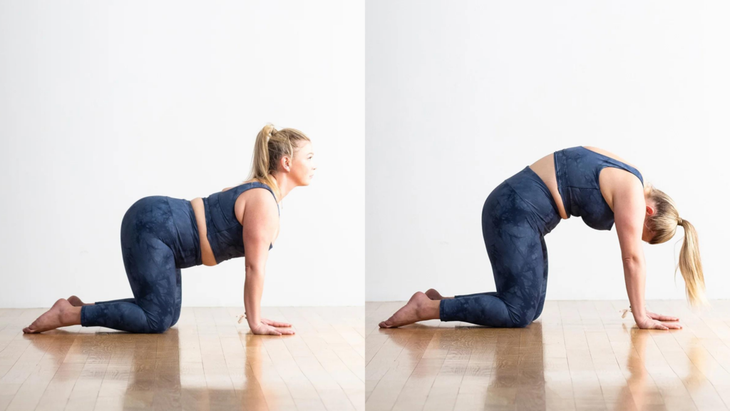
Cat–Cow
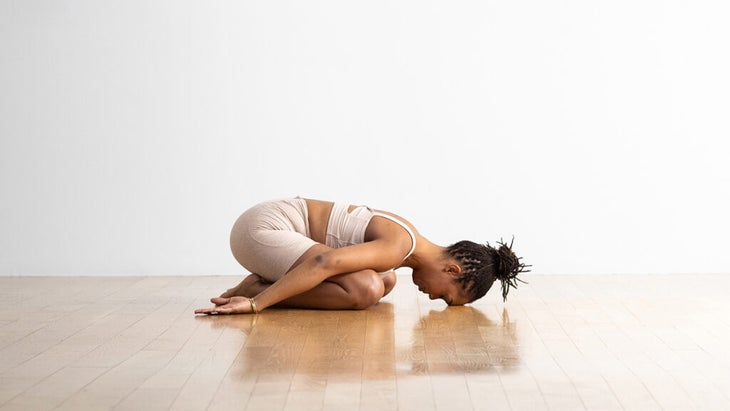
Balasana (Child’s Pose)
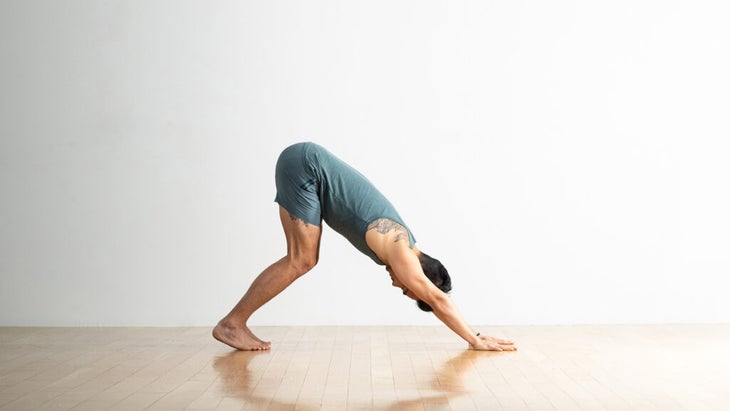
Adho Mukha Svanasana (Downward-Facing Dog Pose)
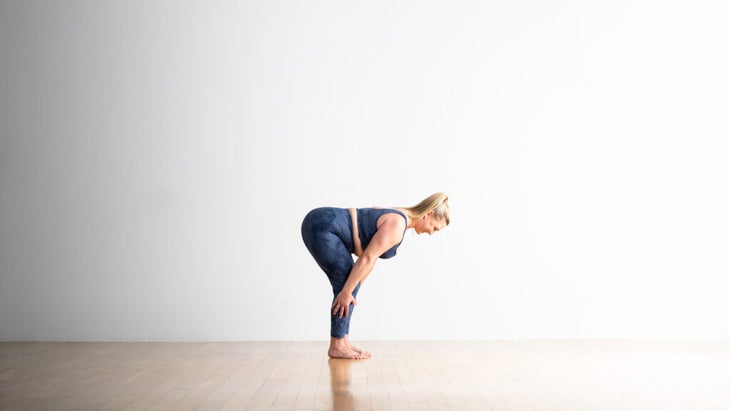
Ardha Uttanasana (Standing Half Forward Bend)
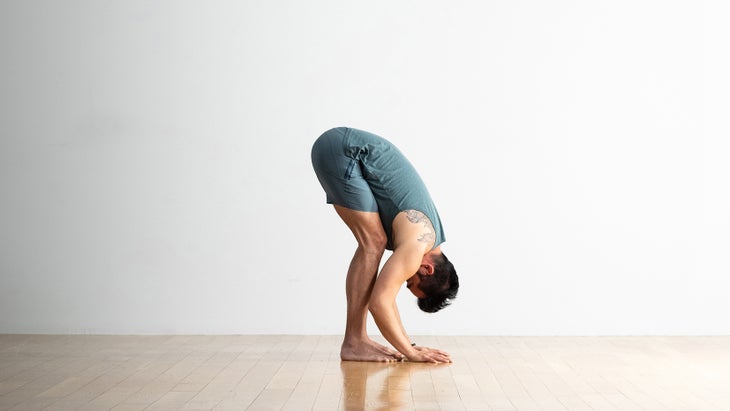
Uttanasana (Standing Forward Bend)
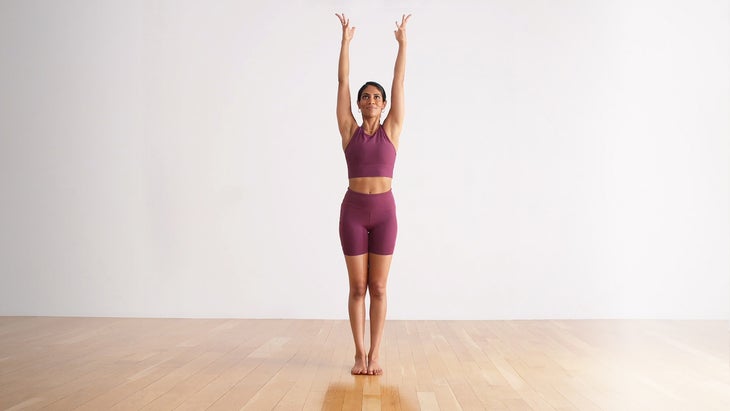
Urdhva Hastasana (Upward Salute)
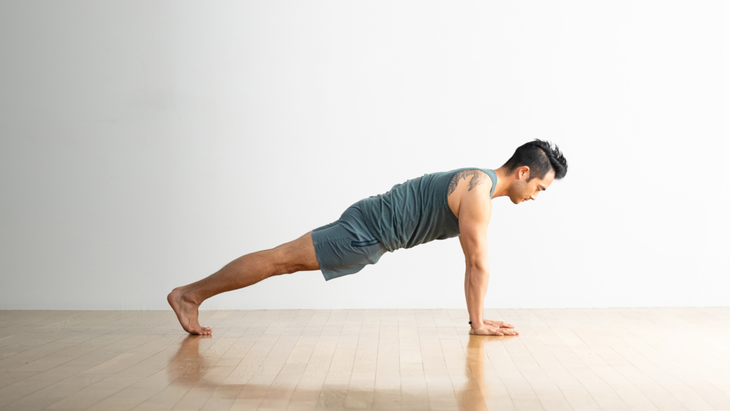
Plank
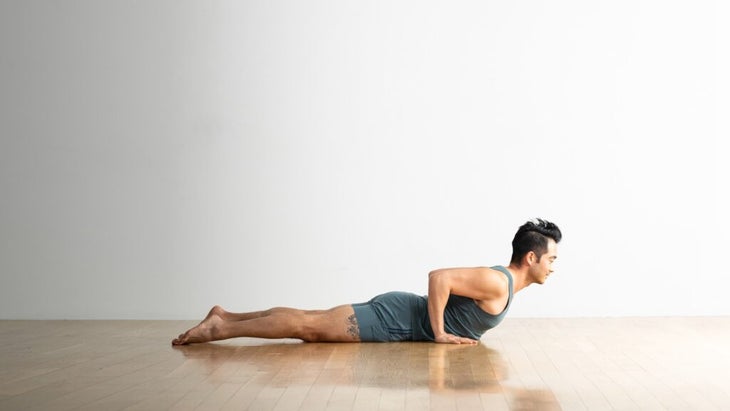
Cobra Pose

Downward Dog
Progression
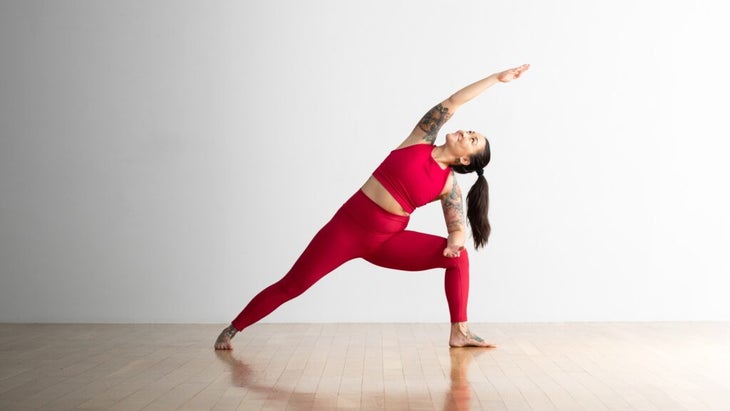
Utthita Parsvakonasana (Extended Side Angle Pose)
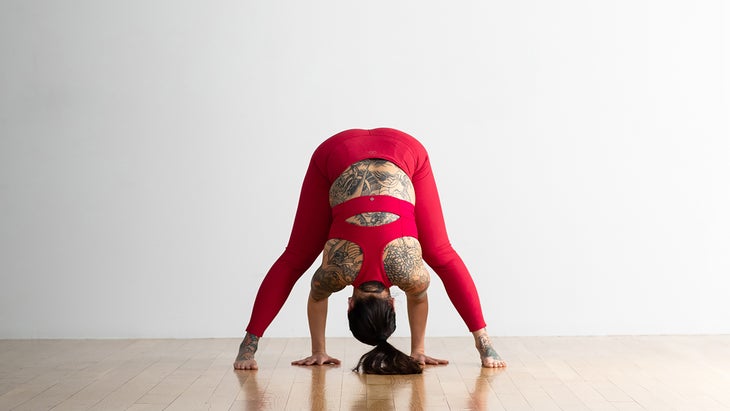
Prasarita Padottanasana (Wide-Legged Standing Forward Bend)
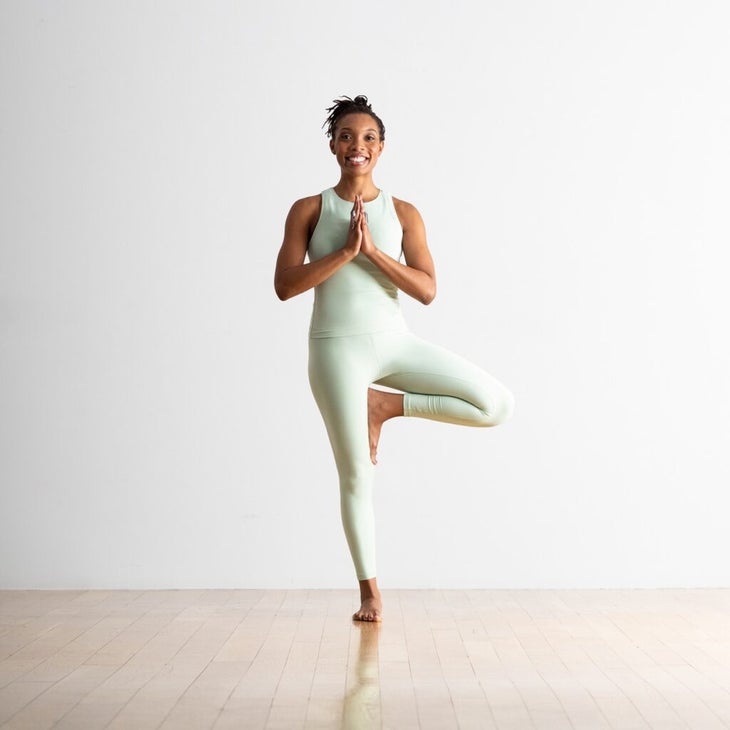
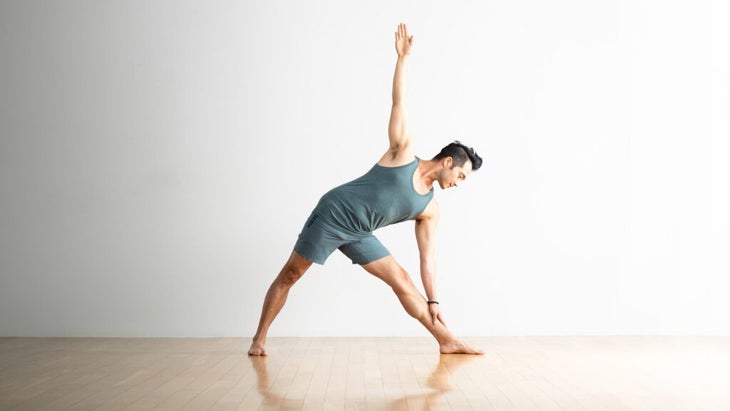
Utthita Trikonasana (Triangle Pose)
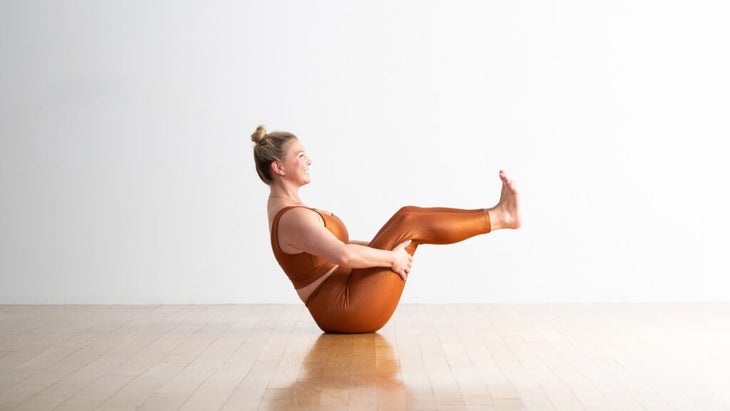
Navasana (Boat Pose)

Salabhasana (Locust Pose)
Cool Down
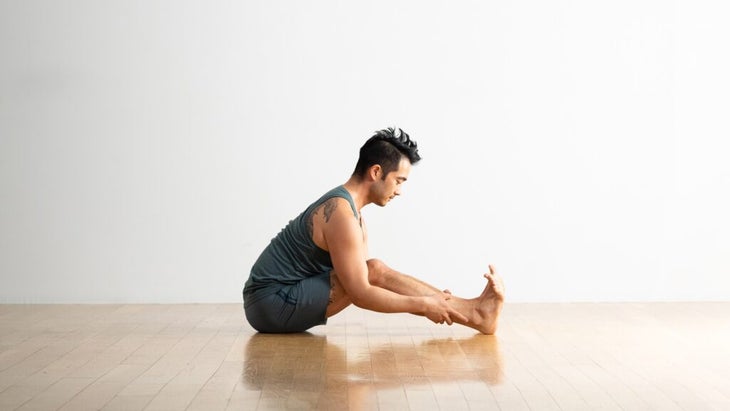
Paschimottanasana (Seated Forward Bend)

Baddha Konasana (Bound Angle Pose)
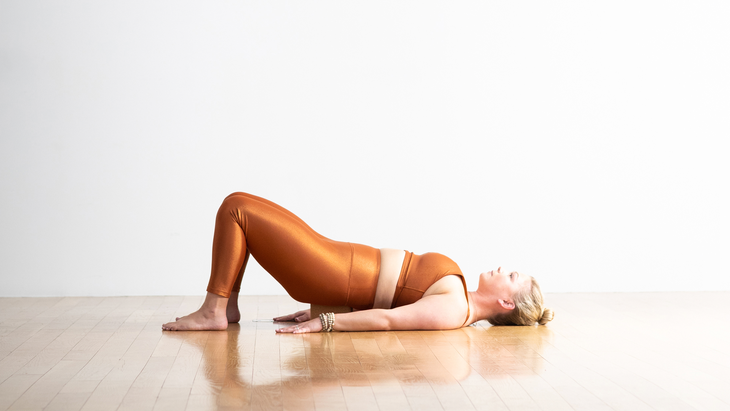
Setu Bandha Sarvangasana (Supported Bridge Pose)
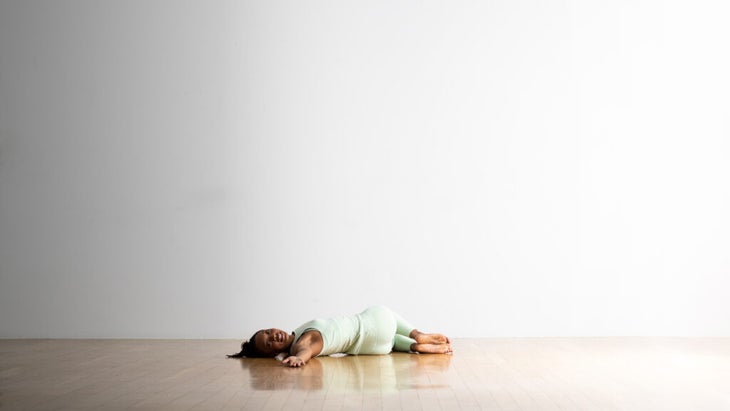
Reclining Twist
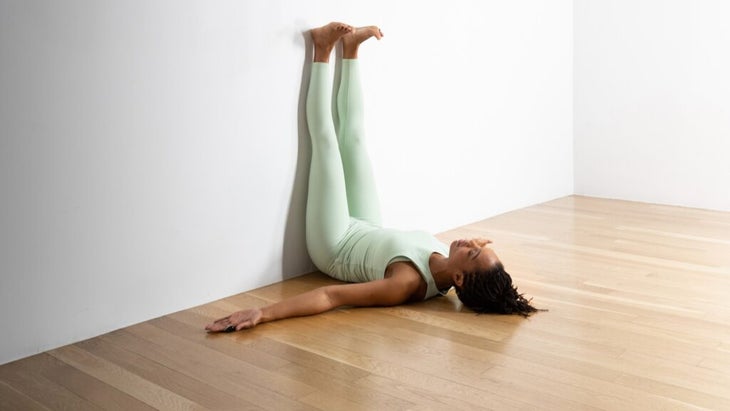
Viparita Karani (Legs-Up-the-Wall Pose)
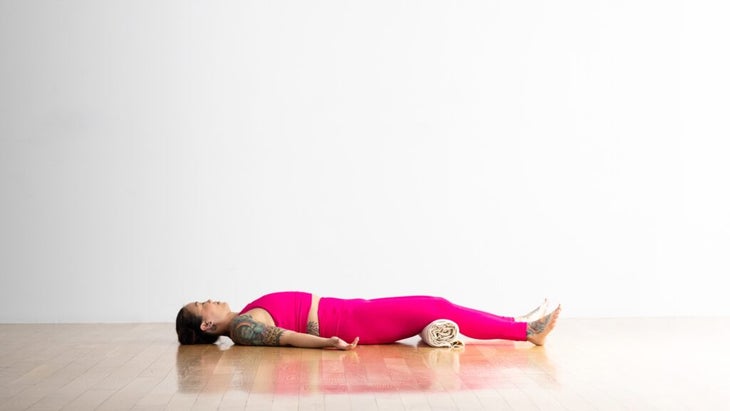
Savasana (Corpse Pose)
Learn more about how yoga can transform your everyday life and enhance your connection to your body, mind, and soul by subscribing to our newsletter!
This article has been updated. Originally published November 7, 2012.

